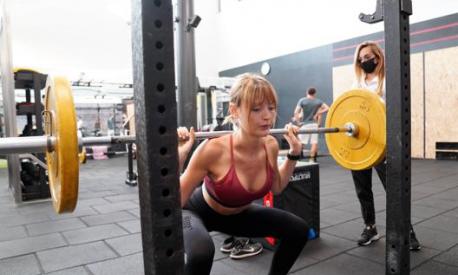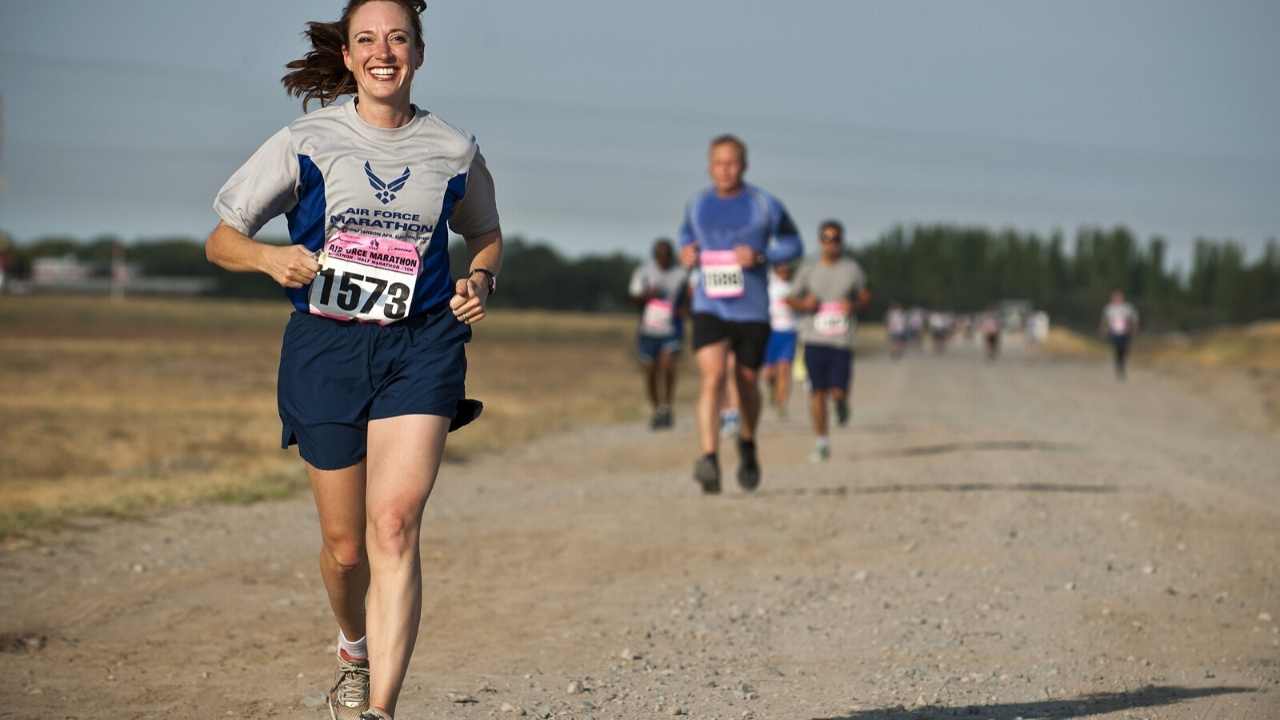
Getting back into working out can be a challenge if you've been away for a while. If you've been unable to exercise, you may not be sure where to begin. You might have been too busy with other responsibilities or simply not had the time to exercise. This means that you need to take it slow and work your way up gradually. You should be able to re-build the basics and work on mobility. Eventually, you should increase the intensity and volume of your workouts. These tips will help you plan your training and ensure that you live a healthy and fit lifestyle.
Jumping into high-intensity, interval training (HIIT) is the most common error people make when they start a new exercise regimen. This type of exercise can be very demanding, so you need to make sure you are in good shape. While you may be eager to try HIIT, it's important to start slow and gradually. Start with moderate activity to determine your ability to handle the activity.

It is important to find a friend or partner for exercise. A virtual buddy can help you stay motivated and consistent. Find a friend that is interested in starting to exercise again. You'll be more likely stay consistent if you are held accountable for each other. It's a great way to stay motivated and keep going. However, you need to make sure you choose someone who is willing to help you get back into your fitness routine.
Before you start your first fitness routine, consult your doctor. A doctor's advice will put your mind at ease and make you confident about your abilities and ability. If you feel the workout is too strenuous, decrease the intensity or reduce the time. You will soon get used to it. Start small and work your way up. This will allow you to continue being active and build your strength, stamina and endurance.
Once you have settled into a routine again, it is important to ensure that your diet is healthy. Ensure you're consuming whole-foods and getting adequate protein. If you take a break from meal preparation, you will need to restart it. Whether you prefer cooking or baking, it's important to keep your body happy. It is important to stay active even if you've been away from home for a while.

Two weeks of rest is recommended before you begin your workout. Before you start, you will need a plan. To get started, it is important to train for as long and as hard as possible. You should reduce your intensity while working out at the gym. One example is that you may only need to do a couple of 30-minute sessions each week. To keep your routine current, you can even add one extra day to your weekly schedule.
FAQ
What should I eat?
Consume lots of fruits, vegetables. These fruits and vegetables are high in vitamins, minerals, which can help you keep your immune systems strong. Also, fruits and vegetables are rich in fiber. This makes them filling as well as helping with digestion. Try to include at least five servings of fruit and veg per day.
Get plenty of water. Water helps flush toxins out of your body and makes you feel fuller between meals. Drink about eight glasses each day.
Eat whole grains instead of refined ones. Whole grains are rich in nutrients such as iron, zinc and magnesium. Some nutrients have been removed from refined grains.
Avoid sugary drinks. Sugary drinks have empty calories and are a major contributor to obesity. Choose water, milk or unsweetened tea instead.
Avoid fast food. Fast food lacks nutritional value. You won't get the energy you need to function well, despite how delicious it may be. Choose healthier options like salads, soups and sandwiches as well as pasta dishes.
Limit your alcohol consumption. Alcohol is a poor nutrient and has empty calories. Limit your intake of alcohol to two drinks per week.
Red meats should be avoided. Red meats are high-in saturated fat and cholesterol. You should choose lean cuts like beef, pork lamb, chicken and fish instead.
What causes weight loss as we age?
How do you determine if your bodyweight is changing?
Weight loss happens when there is less muscle mass and more fat. This means that you must consume more calories than you use daily. Reduced activity is the leading cause of weight gain. Other reasons include poor eating habits, stress, hormone imbalances, certain medications and illness. If there is more body fat than muscle mass, then weight gain can occur. It occurs when people consume more calories per day than they need. The most common causes are overeating, increased activity, hormonal changes, and excessive calories.
We eat less calories than we burn, which is the main reason our bodies lose weight. Exercise regularly increases your metabolism rate, which allows you to burn more calories every day. This does not necessarily mean that we will get thinner. What is more important is whether or not our body is losing or gaining weight. If we are burning more calories than what we eat, then we will lose weight. However, if we consume more calories than we burn, we end up storing them as extra fat.
As we age, our ability to move around is slower and we are less mobile. We also tend not to eat as much food as we used to when we were younger. Also, we are more likely to gain weight. On the flipside, we are more muscular than we really need and appear bigger.
If you don't weigh yourself every week, it's impossible to determine how much weight has been lost. There are many methods to measure your weight. You can measure your waist, hips and thighs as well as your arms. Some people prefer using bathroom scales and others prefer tape measure.
For a better track of your progress, try to weigh yourself once per week and measure your waistline once every month. To see how far you have come, you can take photos of yourself every few month.
You can also check your height online to find out how many pounds you have. For example, if you're 5'10" tall and weigh 180 pounds, you'd probably weigh 180 pounds.
Are there 5 ways to have a healthy lifestyle?
Healthy living means eating right, exercising regularly and getting enough sleep. It also involves managing stress and having fun. Healthy eating means avoiding sugary and processed foods. Exercise burns calories and strengthens the muscles. Sleeping well improves concentration and memory. Stress management reduces anxiety, depression and other symptoms. Fun keeps us vibrant and young.
How does an anti-biotic work?
Antibiotics are drugs which destroy harmful bacteria. To treat bacterial infections, antibiotics are used. There are many different types of antibiotics. Some are given orally, while some are injected. Other antibiotics are applied topically.
People who have been exposed may be prescribed antibiotics. For example, if someone has had chicken pox, he or she might take an oral antibiotic to prevent shingles later on. Or, if someone has had strep throat, he or she might receive an injection of penicillin to help prevent pneumonia.
If antibiotics are to be administered to children, they must be prescribed by a doctor. Children are at greater risk than adults for developing serious side effects from taking antibiotics.
Diarrhea is the most common side effect from antibiotics. Other possible side effects include diarrhea, nausea and vomiting, allergy reactions, dizziness, dizziness, stomach cramps, nausea, vomiting or allergic reactions. These symptoms usually go away after treatment ends.
How can I get enough vitamins?
The majority of your daily needs can be met through diet alone. Supplements are available if you are deficient. You can purchase a multivitamin that includes all of the vitamins you need. You can also buy individual vitamins in your local drugstore.
Talk to your doctor if you have concerns about your nutritional intake. Dark green leafy vegetables like spinach, broccoli and kale, as well as turnip greens and mustard greens such as turnip and mustard greens and bok choy, are rich in vitamins K & E.
Ask your doctor if there is any doubt about how much vitamin you should be taking. Based on your medical history, and your current health status, your doctor will recommend the right dosage.
What's the difference of a calorie versus a Kilocalorie?
Calories are units that measure how much food has energy. A calorie is a unit of measure. One calorie is the amount of energy required to heat one gram water one degree Celsius.
Kilocalories are another way to describe calories. Kilocalories are measured in thousandths of a calorie. 1000 calories is one kilocalorie.
How can I live my best everyday life?
Finding out what makes your heart happy is the first step to living a fulfilled life. You can then work backwards once you know what makes YOU happy. You can also ask others how they live their best lives everyday.
You can also read books like "How to Live Your Best Life" by Dr. Wayne Dyer. He speaks about happiness and fulfillment in all areas of life.
Statistics
- WHO recommends reducing saturated fats to less than 10% of total energy intake; reducing trans-fats to less than 1% of total energy intake; and replacing both saturated fats and trans-fats to unsaturated fats. (who.int)
- This article received 11 testimonials and 86% of readers who voted found it helpful, earning it our reader-approved status. (wikihow.com)
- According to the 2020 Dietary Guidelines for Americans, a balanced diet high in fruits and vegetables, lean protein, low-fat dairy and whole grains is needed for optimal energy. (mayoclinichealthsystem.org)
- nutrients.[17]X Research sourceWhole grains to try include: 100% whole wheat pasta and bread, brown rice, whole grain oats, farro, millet, quinoa, and barley. (wikihow.com)
External Links
How To
27 Steps to a Healthy Lifestyle when Your Family Buys Junk Food
The best way to eat healthily is to cook at your home. It can be difficult to cook healthy meals at home. This article will offer some suggestions on making healthier dining choices at restaurants.
-
Find restaurants that offer healthy options.
-
Before ordering meat dishes, order salads and other vegetables.
-
Ask for sauces made without sugar.
-
Avoid fried foods.
-
Ask for grilled meats, not fried.
-
If you don't really need dessert, do not order it.
-
It is important to have something more after dinner.
-
Take your time and chew slowly.
-
Drink plenty of water while eating.
-
You should not skip breakfast or lunch.
-
Have fruit and veggies with every meal.
-
Consider drinking milk instead of soda.
-
Try to stay away from sugary drinks.
-
Limit salt in your diet
-
Try to limit your frequent visits to fast-food restaurants.
-
Ask someone to come along if you are unable to resist temptation.
-
Do not let your kids watch too much TV.
-
When you are eating, keep the television off.
-
Do not consume energy drinks.
-
Take regular breaks from the office.
-
Get up at a reasonable hour and do some exercise.
-
Do some exercise every day.
-
Start small and build up gradually.
-
Set realistic goals.
-
Be patient.
-
You can exercise even when you don't feel like doing it.
-
Positive thinking is important.